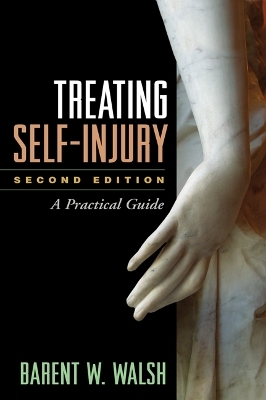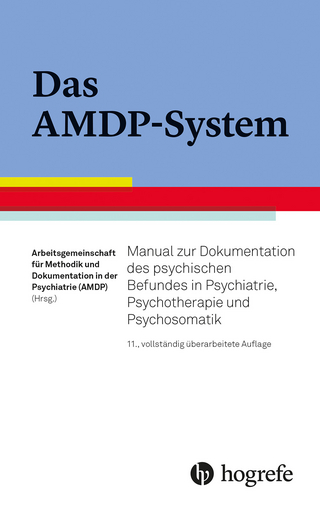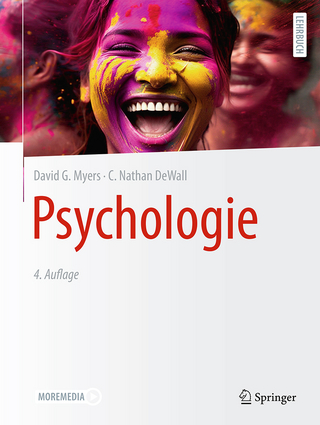
Treating Self-Injury, Second Edition
Guilford Press (Verlag)
978-1-4625-0539-5 (ISBN)
New to This Edition *Incorporates up-to-date research and clinical advances. *Now uses a stepped-care framework to match interventions to client needs. *Chapters on the relationship between suicide and self-injury, formal assessment, family therapy, and residential treatment for adolescents. *Special-topic chapters on the choking game, foreign body ingestion, multiple self-harm behaviors, and self-injury in correctional settings.
Barent W. Walsh, PhD, is Executive Director of The Bridge of Central Massachusetts in Worcester and Teaching Associate in Psychiatry at Harvard Medical School. The Bridge specializes in implementing evidence-based practice models according to protocol in public-sector settings. It comprises over 40 programs serving persons with mental health or developmental disability challenges, including special education; residential treatment; wraparound services; supported housing services; a drop-in center for gay, lesbian, bisexual, and transgender teens; and a program for homeless people. A recipient of the Lifetime Achievement Award from the Massachusetts chapter of the National Association of Social Workers, Dr. Walsh has worked with self-injuring persons for over 40 years and has conducted research, written extensively, and presented internationally on self-injury. He has consulted on this topic at numerous schools, outpatient clinics, group homes, psychiatric hospitals, and correctional facilities, and has also served on the clinical and research faculties of the Simmons and Boston College Schools of Social Work.
I. Definition and Contexts for Self-Injury 1. Definition and Differentiation from Suicide 2. The Relationship between Self-Injury and Suicide 3. An Overview of Direct and Indirect Self-Harm 4. Major Groups in Which Self-Injury Occurs 5. Body Piercings, Tattoos, Brandings, Scarifications, and Other Forms of Body Modification 6. A Biopsychosocial Model for Self-Injury II. Assessment and Treatment: A Stepped-Care Model Treatment: Step 1 7. Initial Therapeutic Responses 8. Formal Assessment of Self-Injury, Jennifer J. Muehlenkamp 9. Cognitive-Behavioral Assessment 10. Contingency Management Treatment: Step 2 11. Replacement Skills Training 12. Cognitive Treatment 13. Family Therapy, Michael Hollander 14. Psychopharmacological Treatment, Gordon P. HarperTreatment: Step 3 15. Body Image Work 16. Prolonged Exposure or Cognitive Restructuring for Treating PTSD and Related Self-Injury Treatment: Step 4 17. Treating Persons with Multiple Self-Harm Behaviors 18. Residential Treatment in AdolescentsTargeting Self-Injury and Suicidal Behavior, with Leonard A. Doerfler and Ariana PerryIII. Specialized Topics 19. Managing Reactions to Self-Injury: A Guide for Therapists and Other Caregivers 20. Social Contagion and Self-Injury 21. A Protocol for Managing Self-Injury in School Settings 22. Asphyxial Risk Taking (the Choking Game), Amy M. Brausch 23. Understanding, Managing, and Treating Foreign-Body Ingestion, with Ariana Perry 24. Self-Injury in Correctional Settings, Kenneth L. Appelbaum 25. Treating Major Self-Injury Afterword Appendix A. Breathing Manual Appendix B. Body Attitudes Scale (BAS) Appendix C. Clinical Scales to Assess Self-Injury Appendix D. Helpful Websites Related to Self-Injury
Appendix E. Bill of Rights for People Who Self-Harm
| Erscheint lt. Verlag | 14.8.2012 |
|---|---|
| Verlagsort | New York |
| Sprache | englisch |
| Maße | 152 x 229 mm |
| Gewicht | 712 g |
| Themenwelt | Geisteswissenschaften ► Psychologie ► Klinische Psychologie |
| Geisteswissenschaften ► Psychologie ► Persönlichkeitsstörungen | |
| Medizin / Pharmazie ► Medizinische Fachgebiete ► Psychiatrie / Psychotherapie | |
| ISBN-10 | 1-4625-0539-2 / 1462505392 |
| ISBN-13 | 978-1-4625-0539-5 / 9781462505395 |
| Zustand | Neuware |
| Haben Sie eine Frage zum Produkt? |
aus dem Bereich


